South Korea schools shut over radioactive rain From The Herald Sun via Godlike Productions. Excerpts:
DOZENS of South Korean schools have cancelled classes as officials scrambled to quell fears that rain contained radioactive material from Japan's stricken nuclear plant.
More than 130 primary schools and kindergartens in Gyeonggi province surrounding the capital Seoul cancelled or cut classes today after rain began falling on orders from the provincial education office.
..
Concern grew in the nation closest to Japan after the weather agency said on Monday that radioactive material from the crippled Fukushima nuclear plant may be carried to the peninsula by south-easterly winds.
The amount of radioactive material contained in the rainfall is too tiny to pose any health threat, (Officials keep saying that..) the prime minister's office said today, calling for education offices to refrain from "making parents nervous".
With good reason, the Koreans are nervous.
Closing Ranks: The NRC, the Nuclear Industry, and TEPCo. Are Limiting the Flow of Information Latest video from Arnie Gundersen. Definitely worth the watch.
Japan injects nitrogen into nuke reactor to prevent blast Excerpts:
TOKYO - Tokyo Electric Power Co (TEPCO) began pumping nitrogen gas into a stricken reactor at the troubled Fukushima Daiichi nuclear power plant on Thursday to prevent the risk of a hydrogen explosion.
Workers injected nitrogen gas into the containment vessel of the plant's No 1 reactor in process that could take several days, according to the embattled utility firm.
..
"Under these conditions, if we continue cooling the reactors with water, the hydrogen leaking from the reactor vessel to the containment vessel could accumulate and could reach a point where it could explode," a TEPCO official was quoted as saying Thursday.
In Wake Of Nuclear Crisis, TEPCO's Plans Questioned Excerpts:
More than three weeks after an earthquake and tsunami set off one of the world's most serious nuclear accidents, at Japan's Fukushima Dai-ichi plant, experts are intensifying their scrutiny of how the plant operator, Tokyo Electric Power Co., has handled the crisis.
Some events TEPCO couldn't have foreseen — such as the massive size of the tsunami that swamped the coastal facility. But nuclear experts say that in the days following the initial series of explosions and fires inside the reactors, which caused fuel rods to melt and subsequent large releases of radiation, TEPCO made very costly — and avoidable — mistakes.
The company, they say, was ultimately surprised and overwhelmed by the chaos created by the tsunami. And its poor coordination of the response may have helped prolong the crisis.
"We're three weeks into this and this thing should be more under control than it is," said Matthew Bunn, a professor and the co-principal investigator of the Managing the Atom Project at Harvard University's Belfer Center for Science and International Affairs. "It seems that everyone at TEPCO is running around as fast as they can, trying to do what they can, but it doesn't seem the tests and exercises of emergency plans were there that should have been there."
And:
"The flaw at Fukushima was that worst-case tsunami predictions were exceeded, and Japan's regulatory standards for backup cooling systems didn't enable the Dai-ichi plant to withstand the flooding," said Ritch. "The tragedy is that it was a preventable accident."
Japan Red Cross struggling to hand out record donations Excerpts:
The Japanese Red Cross has $1.6 billion in donations from the public in the month after Japan's devastating earthquake and tsunami, the most it has been given for any relief campaign, but the charity is struggling to get the cash to the neediest.
March 11's magnitude 9.0 earthquake and the giant tsunami and nuclear crisis that followed left more than 27,600 dead or missing, sent 163,000 people into shelters, and destroyed infrastructure in the north of the country.
This loss of organization is complicating the relief effort.
Facing Radiation Japan Races to Find the Dead From Time. Excerpts:
Japanese police raced Thursday to find thousands of missing bodies before they decompose along a stretch of tsunami-pummeled coast that has been largely off-limits because of a radiation-leaking nuclear plant.
Nearly a month after a 9.0-magnitude earthquake generated the tsunami along Japan's northeastern coast, more than 14,700 people are still missing. Many of those may have been washed out to sea and will never be found.
In the days just after the March 11 disaster, searchers gingerly picked through mountains of tangled debris, hoping to find survivors. Heavier machinery has since been called in, but unpredictable tides of radiation from the Fukushima Dai-ichi nuclear complex have slowed progress and often forced authorities to abandon the search, especially within a 12-mile (20-kilometer) evacuation zone around the plant.
Japan disaster exposes vulnerabilities of global supply chains Short answer: The public doesn't understand the size of current Global supply chains, and major impacts are sure to come. And no, they have not hit yet..:
DOZENS of South Korean schools have cancelled classes as officials scrambled to quell fears that rain contained radioactive material from Japan's stricken nuclear plant.
More than 130 primary schools and kindergartens in Gyeonggi province surrounding the capital Seoul cancelled or cut classes today after rain began falling on orders from the provincial education office.
..
Concern grew in the nation closest to Japan after the weather agency said on Monday that radioactive material from the crippled Fukushima nuclear plant may be carried to the peninsula by south-easterly winds.
The amount of radioactive material contained in the rainfall is too tiny to pose any health threat, (Officials keep saying that..) the prime minister's office said today, calling for education offices to refrain from "making parents nervous".
With good reason, the Koreans are nervous.
Closing Ranks: The NRC, the Nuclear Industry, and TEPCo. Are Limiting the Flow of Information Latest video from Arnie Gundersen. Definitely worth the watch.
Japan injects nitrogen into nuke reactor to prevent blast Excerpts:
TOKYO - Tokyo Electric Power Co (TEPCO) began pumping nitrogen gas into a stricken reactor at the troubled Fukushima Daiichi nuclear power plant on Thursday to prevent the risk of a hydrogen explosion.
Workers injected nitrogen gas into the containment vessel of the plant's No 1 reactor in process that could take several days, according to the embattled utility firm.
..
"Under these conditions, if we continue cooling the reactors with water, the hydrogen leaking from the reactor vessel to the containment vessel could accumulate and could reach a point where it could explode," a TEPCO official was quoted as saying Thursday.
In Wake Of Nuclear Crisis, TEPCO's Plans Questioned Excerpts:
More than three weeks after an earthquake and tsunami set off one of the world's most serious nuclear accidents, at Japan's Fukushima Dai-ichi plant, experts are intensifying their scrutiny of how the plant operator, Tokyo Electric Power Co., has handled the crisis.
Some events TEPCO couldn't have foreseen — such as the massive size of the tsunami that swamped the coastal facility. But nuclear experts say that in the days following the initial series of explosions and fires inside the reactors, which caused fuel rods to melt and subsequent large releases of radiation, TEPCO made very costly — and avoidable — mistakes.
The company, they say, was ultimately surprised and overwhelmed by the chaos created by the tsunami. And its poor coordination of the response may have helped prolong the crisis.
"We're three weeks into this and this thing should be more under control than it is," said Matthew Bunn, a professor and the co-principal investigator of the Managing the Atom Project at Harvard University's Belfer Center for Science and International Affairs. "It seems that everyone at TEPCO is running around as fast as they can, trying to do what they can, but it doesn't seem the tests and exercises of emergency plans were there that should have been there."
And:
"The flaw at Fukushima was that worst-case tsunami predictions were exceeded, and Japan's regulatory standards for backup cooling systems didn't enable the Dai-ichi plant to withstand the flooding," said Ritch. "The tragedy is that it was a preventable accident."
Japan Red Cross struggling to hand out record donations Excerpts:
The Japanese Red Cross has $1.6 billion in donations from the public in the month after Japan's devastating earthquake and tsunami, the most it has been given for any relief campaign, but the charity is struggling to get the cash to the neediest.
March 11's magnitude 9.0 earthquake and the giant tsunami and nuclear crisis that followed left more than 27,600 dead or missing, sent 163,000 people into shelters, and destroyed infrastructure in the north of the country.
This loss of organization is complicating the relief effort.
Facing Radiation Japan Races to Find the Dead From Time. Excerpts:
Japanese police raced Thursday to find thousands of missing bodies before they decompose along a stretch of tsunami-pummeled coast that has been largely off-limits because of a radiation-leaking nuclear plant.
Nearly a month after a 9.0-magnitude earthquake generated the tsunami along Japan's northeastern coast, more than 14,700 people are still missing. Many of those may have been washed out to sea and will never be found.
In the days just after the March 11 disaster, searchers gingerly picked through mountains of tangled debris, hoping to find survivors. Heavier machinery has since been called in, but unpredictable tides of radiation from the Fukushima Dai-ichi nuclear complex have slowed progress and often forced authorities to abandon the search, especially within a 12-mile (20-kilometer) evacuation zone around the plant.
Japan disaster exposes vulnerabilities of global supply chains Short answer: The public doesn't understand the size of current Global supply chains, and major impacts are sure to come. And no, they have not hit yet..:










































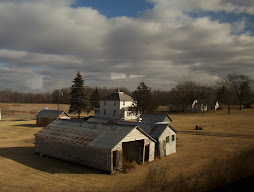











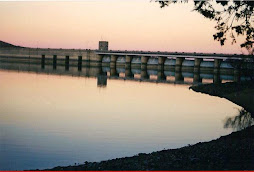







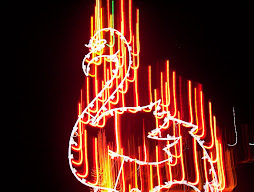




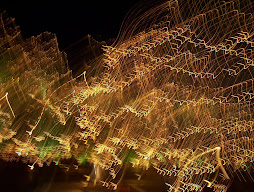













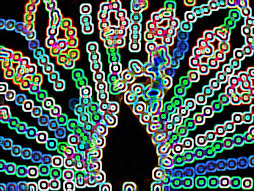























No comments:
Post a Comment